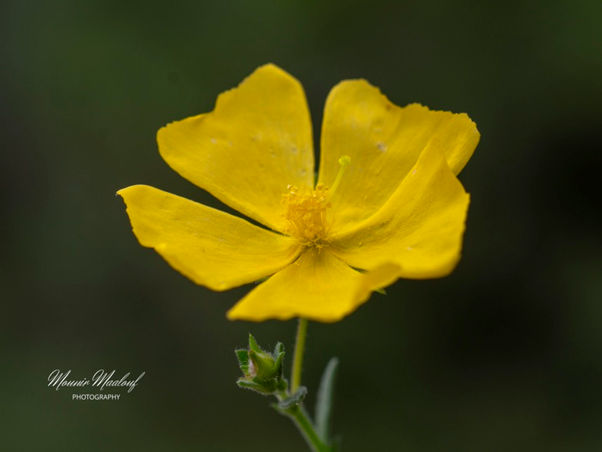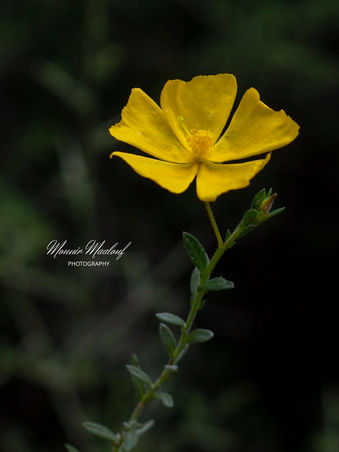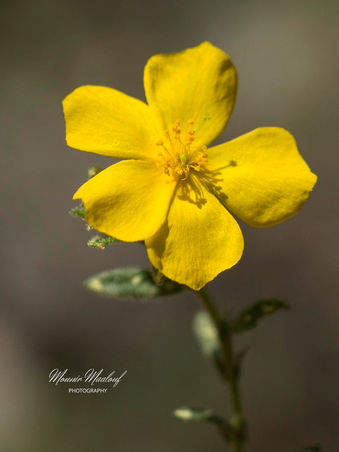Family |
Cistaceae
Fumana arabica
(L.) Spach
Fumana arabica (L.) Spach
(Ann. Sci. Nat., Bot., sér. 2, 6: 359; 1836 – Nouvelle Flore du Liban et de la Syrie, vol. 2, Pl. CLXXXVIII nº 2; 1969)
• Life-form & habit: Low, evergreen chamaephyte, 10–30 cm tall, forming compact, woody-based cushions or mats. Branches numerous, slender, ascending to prostrate, green to reddish-brown, often densely leafy and slightly pubescent.
• Leaves: Opposite, sessile, linear to narrowly lanceolate, 4–10 × 1–2 mm, entire, revolute on the margins, glabrous or sparsely hairy, persistent; stipules small, scarious.
• Inflorescence & flowers: Solitary or few-flowered in terminal or axillary cymes. Pedicels short, 2–6 mm. Sepals 5, lanceolate, unequal, the outer slightly shorter and broader. Petals 5, bright yellow, obovate, 5–7 mm long, slightly crinkled. Stamens 10–15; ovary superior with 3 styles.
• Fruit: Capsule ovoid, 3–4 mm, dehiscent into three valves; seeds few, smooth, brown.
• Phenology: Flowers from March to May; fruits mature from May to June.
• Habitat & elevation: Dry, sunny slopes, limestone and dolomitic outcrops, garrigue, and open phrygana, from sea level up to 1 800 m. Prefers stony calcareous soils.
• Lebanese distribution: Recorded by Mouterde from coastal and montane regions of Mount Lebanon — Beirut, Jezzine, Barouk, Zahlé, and Dahr el-Baïdar; also present in the Anti-Lebanon and Beqaa Valley.
• Native range: Albania, Algeria, Bulgaria, Cyprus, East Aegean Is., Egypt, Greece, Iran, Iraq, Italy, Kriti, Krym, Lebanon, Syria, Libya, Morocco, North Caucasus, NW. Balkan Pen., Palestine, Saudi Arabia, Sicilia, Sinai, Transcaucasus, Tunisia, Türkiye (POWO).
• ⚠️ Taxonomic note: A characteristic Mediterranean–Irano-Turanian species distinguished by its small, linear leaves and bright yellow flowers. Closely related to Fumana thymifolia but differs by its taller habit, broader petals, and less revolute leaves. In Lebanon, F. arabica is common on dry limestone slopes and degraded phrygana, often co-occurring with Helianthemum and Cistus species.









